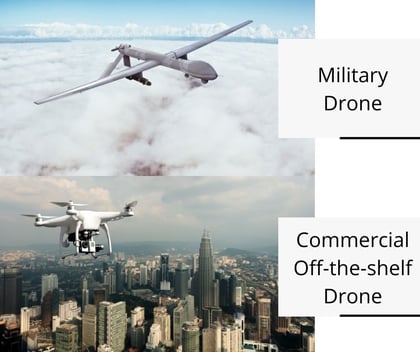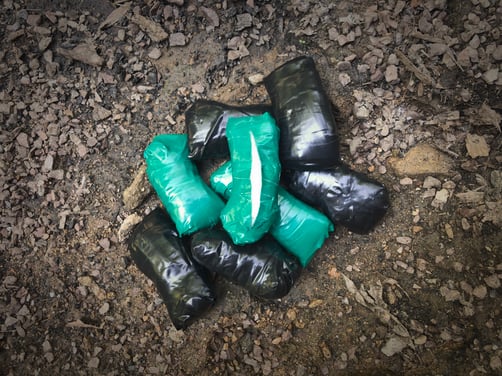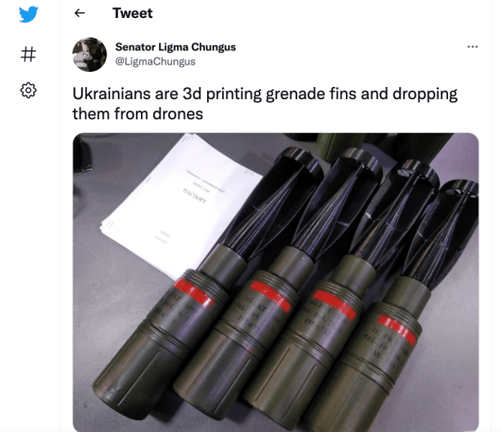Let’s define what a drone is. An Uncrewed Aerial Vehicle (UAV), more commonly referred to as a drone, is an aircraft under the control of a remote pilot controller sometimes referred to as the Ground Control Station (GCS).
The whole system that allows the drone to fly is referred to as an Uncrewed Aerial System (UAS). Without getting too technical, a drone communicates with its controller on the ground via radio signals.
The GCS tells the drone things like the direction, speed and height to fly, and the drone sends back confirmation and video.
For clarification, in this article we will discuss drones that can be purchased off-the-shelf, not military drones.

Highly Regulated, Difficult to Enforce
The Federal Aviation Administration (FAA), the division of the Department of Transportation that regulates US airspace, categorizes drone flight as either commercial or recreational. What constitutes a commercial flight leaves some room for interpretation, but recreational flights are purely for enjoyment.
Commercial drone flights have made a substantial positive impact in areas like agriculture, law enforcement, and construction. But as with all good technology, someone will use it irresponsibly or figure out a way to exploit it.
In the last decade drones have become cheaper and more readily available, and while the FAA continues to educate the public on safe drone use, the clueless and careless recreational/hobbyist pilots continue to represent the bulk of drone-related incidents in the US today. One significant concern is that a drone weighing 5-55 pounds falling from hundreds of feet in the air can injure or kill someone and cause property damage. In most of the hobbyist-caused incidents the drone pilot is never identified.
The Darker Side
In July 2020 a drone pilot attached nylon cords and a copper wire to their device and flew it over a Pennsylvania electrical substation. The drone crashed before it could disrupt operations or cause structural damage, and the pilot has not been identified. The Department of Homeland Security (DHS), Federal Bureau of Investigation, and National Counterterrorism Center issued a Joint Intelligence Bulletin to raise awareness about the incident and the general threat of drones to critical infrastructure.
Security experts advise it’s a matter of time before weaponized drones like the ones used by terrorist groups and cartels appear on the homeland. Ukraine’s success with commercial grade drones to attack and monitor Russian forces demonstrates just how effectively drones can be used in an attack situation.
Drones are not just a physical security threat, though. Demonstrations by cybersecurity experts have shown that drones can aid in cyber attacks. In 2020 the RAND Corporation, a popular global policy think tank that provides research and analysis to the US Armed Forces, published a research report titled How to Analyze the Cyber Threat from Drones. In it they explain the different ways drones can be used in cyber attacks.
To summarize, drones pose some level of threat pretty much everywhere that’s not an open field with no people or property, and the threat should be considered in organizations’ physical and cybersecurity plans.
Here is a breakdown, by industry, that further explores the question posed in the title of this blog - “Why are Drones a Security and Safety Concern?
Drones at Stadiums
Stadium security managers have the enormous responsibility to regularly protect tens of thousands of people at one time. For MLB, NFL, and some NCAA and NASCAR events, the FAA imposes a do not fly restriction within three nautical miles of the stadium starting one hour before an event's scheduled time and ending one hour after. However, this is often ignored.
Drone threats at stadiums include:
-
-
- Mass panic if anything dropped over a crowd
- Accidental drone crash
- Event disruption if drone flies over the stadium walls
- Unauthorized event recording
- Malicious event/attack with a weaponized drone(s)
-
Drones at Mass Gatherings/Protests
Drones are often flown at mass gatherings like fairs and protests to get aerial shots and footage of the crowd which often ends up on YouTube. So mass gatherings share the Stadium concerns plus a few more nefarious concerns.
As we saw in 2020, protests can quickly escalate to riots and looting when nefarious participants engage. Drones can be used as “eyes in the sky” to direct:
-
-
- crowds to where the police are not to avoid confrontation
- angry mobs to where the police are for harassment or attack purposes
- looters to where the police are not
-
Drones at Prisons
Highly fortified Correctional facilities cannot keep drones out. The FAA restricted airspace over 109 Federal Bureau of Prison facilities, and several states passed laws specific to drone flight over private facilities. But this doesn’t stop contraband pilots.
Correctional facilities can serve as drug distribution hubs that correlate with local gang activity. Because drone contraband traffic can follow a senior gang leader inmate, a low-drone-traffic facility today may become a high-traffic facility with the transfer of a single inmate. If drone activity isn't identified quickly enough to respond and prevent an incursion, a facility may go on lockdown that can require a time-consuming and resource-intensive response effort.

Drone threats at prisons include:
-
-
- Contraband delivery (drugs, weapons, cell phones, tools to assist in inmate escape)
- Surveillance to determine staff routines and contraband delivery opportunities
-
Drones at Airports
The FAA imposed strict regulations about drone flights near an airport for obvious safety reasons. Still there have been countless close calls between drones and aircrafts. Any time a drone is spotted near an airport, operations are often shut down which can lead to many millions in financial losses.
Drone threats at airports include:
-
-
- Accidental drone collision with manned aircraft
- Malicious event/attack
-
Drones at Corporate Campuses and Data Centers
Corporate campuses that house incredible amounts of high value data to a nefarious actor employ many cyber and physical security measures to keep nefarious actors out both physically and electronically. However, most have not considered the threat three-dimensionally.
Drone threats at corporate campuses include:
-
-
- Intellectual property theft through rogue access points dropped onto rooftops
- Malicious event/attack on critical infrastructure and high value personnel/customers
- Unauthorized camera surveillance into conference rooms or other sensitive areas
-
Drones at Other Critical Infrastructure
DHS recognizes 16 critical infrastructure sectors “whose assets, systems, and networks, whether physical or virtual, are considered so vital to the United States that their incapacitation or destruction would have a debilitating effect on security, national economic security, national public health or safety, or any combination thereof.” Most if not all of them are vulnerable to drone threats.
Drone threats at other critical infrastructure include:
-
-
- Accidental drone crash by hobbyist pilot
- Intellectual property theft
- Unauthorized video posted publicly
- Surveillance to identify weaknesses to plan a future attack
- Physical attack with weaponized drones
-
Drones in the Military
In a 2021 statement Marine General Kenneth McKenzie said the rise in popularity of cheap, small drones around the world is the “most concerning tactical development” since the improvised explosive device in Iraq. He continued, “I’m not just talking about large unmanned platforms, which are the size of a conventional fighter jet that we can see and deal with by normal air defense means. I’m talking about ones you can go out and buy at Costco right now for $1,000.”
The Ukrainian military’s request for citizens to donate their drones to experienced drone pilots in the war against Russia and Finland’s donation of 140 Mavic mini drones to Ukraine prove that small drones can and are used in combat situations. US troops must be prepared to defend against these tactics used by adversaries when necessary.

Source: Twitter
Consumer-grade drone threats in the military include:
-
-
- Drop hand grenades or IEDs onto troops
- Surveil troop locations/movement
- Direct insurgents during a conflict
-
The next logical question is what can I do about these threats?
In the coming weeks we will post a series of articles that will help you arrive at the answer that’s right for you and your organization.
Go to our blog homepage to subscribe to stay in the loop!